How do you even begin to plan a world trip?
It’s one of the most common questions we get asked.
Derek has always been a big dreamer, and a long-term trip around the world had been in the back of his mind for years. But with two young kids, the real questions were always WHEN and HOW?
Aside from resort-style vacations in the U.S., our boys hadn’t travelled much. We wanted to test the waters before diving into a major life adventure. At four and seven years old, were they ready?
Testing the Waters in Costa Rica
We planned a two-week adventure trip to Costa Rica to find out. In 14 days, we visited nine cities, stayed in local hotels, and avoided American chain restaurants. Costa Rica was the perfect introduction to travel — exotic but family-friendly and foreign enough to stretch us all.
From Vancouver, we flew with a layover in Texas — a long travel day for the boys — but they handled it. Once there, they got to experience a new culture with a few familiar comforts, like Western food! Costa Rica was full of adventure and wildlife, and by the end of the trip, we were convinced: They could do this.
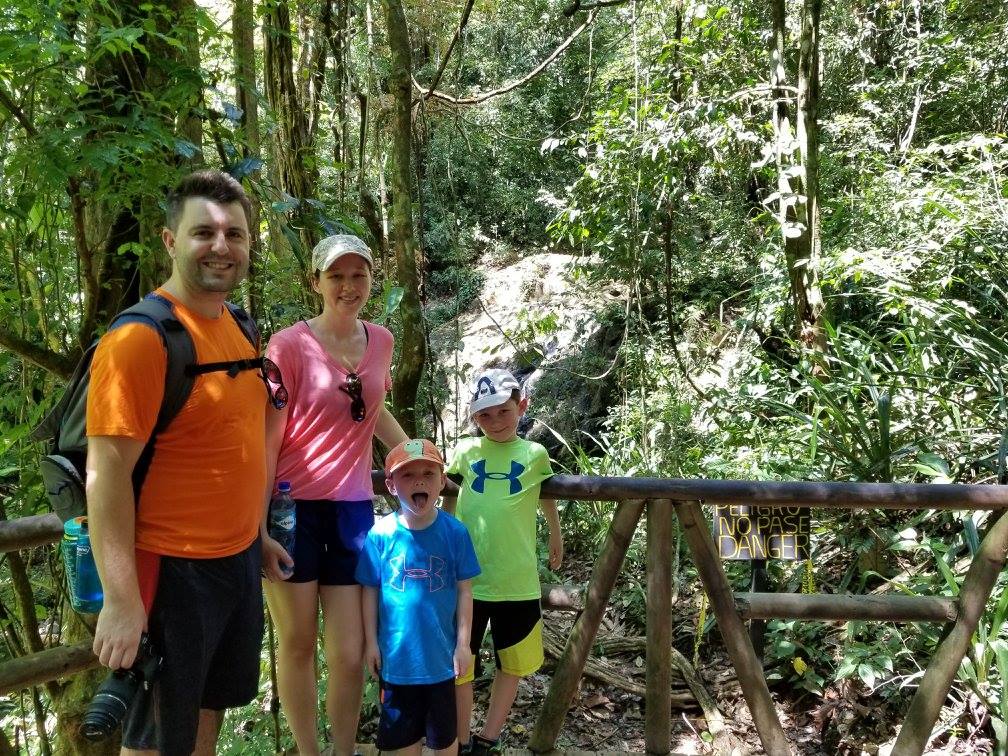
A few months later, I showed Derek two ideas for our next trip: Croatia or Indonesia. Without hesitation, he said, “Let’s do both.” And just like that, the dream became real. We decided to plan a family world trip — and spent the next three years dreaming, planning, and saving.
Where Do You Start?
Planning a world trip can feel overwhelming. But breaking it into steps makes it manageable. For us, it started with one essential mindset: DREAM BIG
This is the fun part. Start by listing everything you’d love to do or see around the world. What are your passions? Wildlife and nature? History and culture? Food and art? What kind of experiences make you feel alive?
Look everywhere for inspiration — books, movies, blogs, travel guides, and conversations with friends and family. This is also a great opportunity to involve kids in planning and get them excited about the trip. Ask your kids what they’d love to do. You might be surprised by their answers. Learn More: How to Involve Kids in Travel Planning
This is the time to DREAM BIG and brainstorm. Create a dream board. Cut out pictures, mark up maps, pin them on a wall, or make it digital — whatever helps you visualize your adventure.
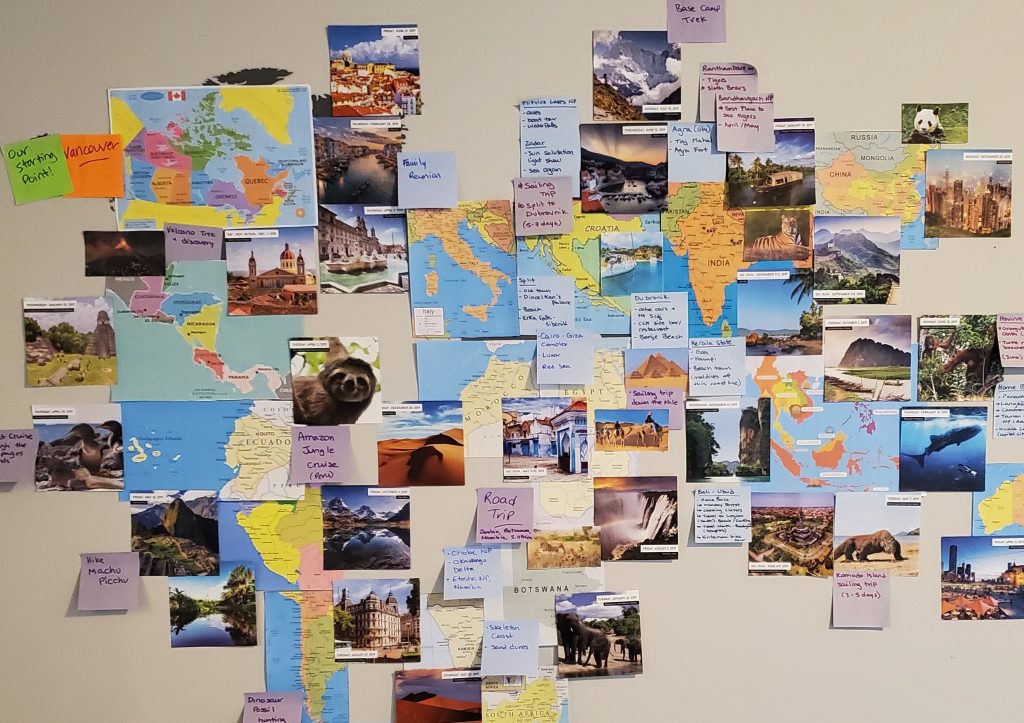
Our World Travel Dream List
Our trip was shaped by a love of wildlife and the goal of seeing animals in their natural habitats. That guided much of our planning. Here’s the dream list we built together as a family — a list of 75 “must-see” experiences across the globe.
Shaping the Journey
From Dream List to Realistic Route
If you’re staring at your dream list thinking: How on earth can we do all this? — You’re not alone.
When we made our “must-see” list, it had 95 things on it. We knew we wouldn’t do them all. And that was never the goal. But it was still hard to narrow it down. We wanted to see everything, experience everything, and not miss a thing.
What helped us, was realizing that this trip didn’t have to be our only big adventure. That shift in mindset helped us focus on what we truly wanted to do and made decisions easier. We started asking: What matters most to us right now, on this trip, as a family? That’s when the real itinerary started to come together.
Ask yourself a few questions to help shape your itinerary:
How long will your trip be?
The length of your trip will affect everything — how many places you can visit, how fast you travel, and how deeply you go in each location.
Do you want to visit many countries or go deeper into fewer?
There’s no right answer here. Some travellers love checking off 20+ countries in a few months. Others prefer staying longer in each place. We aimed for 3–4 weeks per country. That gave us enough time for sightseeing, downtime, work, and homeschool days.
What are your must-see experiences?
These will anchor your itinerary. For us, it was a self-driving camping safari through Southern Africa. But since we didn’t want to do this during the rainy season, we had to plan around it. Starting our trip in February, we worked backward — slotting in Morocco and Egypt before arriving in Cape Town in May. Later that year, a family reunion in Italy became another anchor, pulling us to Europe after our time in Africa.
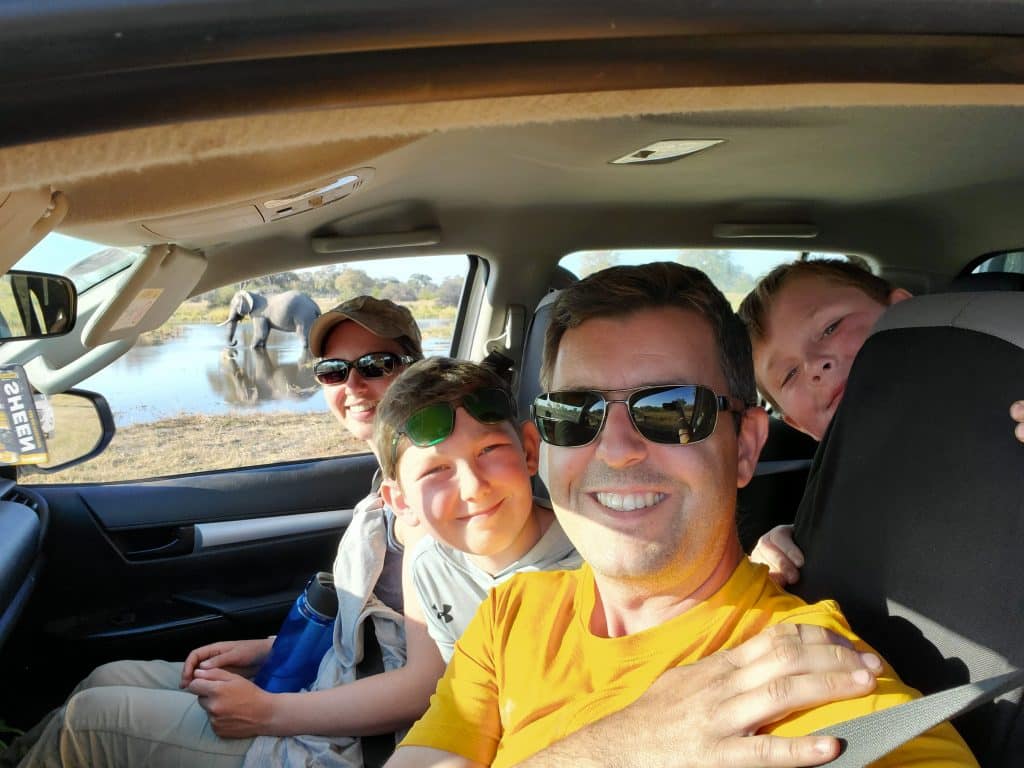
When are you travelling?
We quickly realized it would be impossible to visit every destination at the ideal time, so we had to pick and choose.
Some places are best at specific times of year, while others can be visited year-round, or are even better in the off-season when crowds thin out and prices drop. But timing can also make or break certain parts of your trip. You’ll need to weigh trade-offs like weather, crowds, and budget.
In some cases, the season can create significant challenges or disappointment. For example, sailing in the Caribbean during hurricane season may mean cancelled trips or dangerous weather. Other experiences are tied to specific dates — not just a season, but a narrow time window. If you dream of celebrating Carnival in Rio de Janeiro or catching Japan’s cherry blossom festival, you’ll need to time your visit carefully.
In our second year of travel, we started in Asia. We planned our visit to India in February because it was the best time to see tigers in Ranthambore National Park — but that meant arriving in Vietnam in January during the cold and rainy season. Instead of biking through lush green rice paddies, we arrived just after the harvest to find muddy brown fields.

Tip: Researching when to go — and what to expect — can help you make informed choices, avoid disappointment, and get the most out of your trip. Use your must-see list to find ideal travel windows, then build the rest around that.
Can you stick to one climate?
If you’re travelling for several months or more, packing for multiple seasons can get complicated, especially if you’re trying to travel light. Whenever possible, plan your route to follow the same general climate. Warm-weather travel makes packing much easier (no bulky jackets or boots!) and, in our experience, it’s also more fun with kids.
With a few exceptions, we mostly chased the sun and packed layers we could use to adjust for cooler days. It saved space, simplified daily routines, and made getting out the door much easier.
What Kind of Traveller Are You?
Take some time to reflect on your travel style. Your answers will influence where you go and how you get there.
• Are you adventurous or comfort-seeking?
• Do you love nature, food, history, or cities?
• Are you up for hostels and overnight buses, or more into hotels and rental cars?
• Are you travelling on your own or with kids?
• Will you work while you travel? How important is Wi-Fi or staying in a specific time zone?
How comfortable are you exploring on your own?
Tours can be convenient — everything is planned for you — but they’re often more expensive and less flexible. If you rely on tours for major experiences, check availability and book in advance.
We generally like to explore on our own, but we booked tours when the experience was out of our depth or required guides, like trekking in Sumatra to see wild orangutans or swimming with whale sharks in Mexico. In other cases, we hired tour guides to deepen our understanding of important sites, such as the Colosseum in Rome or the Great Pyramids in Giza. The right guide can bring history to life, making it far more engaging for kids.

What kind of budget are you working with?
Cost will shape your trip more than anything. Some destinations (like Southeast Asia) offer more value for your dollar. Others (like Europe) may require bigger splurges. Do you want to stay in guesthouses, hotels, or camp? Eat out or cook your meals? Take flights or use local transport?
It would be amazing if cost were not a consideration, but for most of us, we need to stick to a budget. There are several ways to stretch your dollar. Learn More: How much does a World Trip cost?
Building an Itinerary
Piecing it together
This is where the puzzle pieces come together — and where things can get overwhelming again. If you are planning several months, it can be challenging to keep the details straight. One strategy that helped us was to make it visual.
We used cutouts: one set with the countries we wanted to visit (plus the best months to go), and another with months of the year. We started with our must-sees in their ideal seasons, then moved the rest around to find a route that made sense, balancing weather, logistics, and cost.
We tried a lot of combinations. You will too. It’s part of the fun.
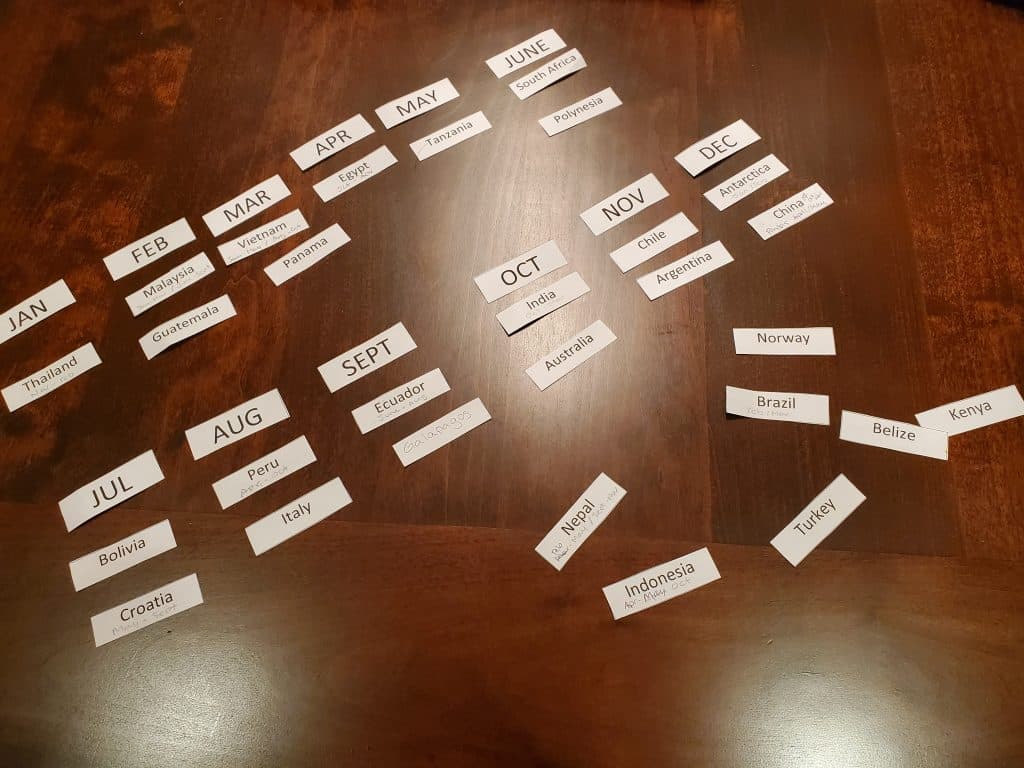
Nailing Down the Details
Once you’ve mapped out a rough itinerary, it’s time to dig into the details: What cities will you visit? What attractions do you want to see? What experiences are worth seeking out?
Travel blogs and tour company websites are a great place to start. They’ll help you spot highlights, discover hidden gems, and get a sense of how long to spend in each destination.
This is also a great time to get the whole family involved. Return to your dream board. Cut out magazine photos, print maps, and add sticky notes with ideas. We hung ours in the living room where we’d see it every day — a constant reminder of our goal and a visual way to see our dream take shape.
Structured or Spontaneous? Finding the Balance
Some travellers want to plan everything in advance. Others prefer to figure it out on the fly. For a long trip, especially one that spans multiple countries and continents, you can’t plan it all before you leave, and that’s okay.
We landed somewhere in the middle. Big-ticket items, like our sailing trip in Croatia, were booked well ahead. But when we flew into Bangkok, we had only booked a place to sleep.
We usually knew which countries we were visiting and had a rough outline of what we wanted to see. But the actual logistics — flights, accommodation, and even which cities to visit — often came together while we were on the road. We’d plan the next country while travelling through the current one, constantly adjusting as we went.
It was a rhythm of ongoing planning and reworking. Do what works for your comfort level. Just know that not everything needs to be nailed down before you leave.
Pivoting Along the Way
Even after all that planning, our final route didn’t look exactly like the itinerary we’d mapped out before we left. We adjusted for time, budget, weather, border closures, and energy. And honestly? Some of the best moments came from those pivots.
Final Thoughts
Planning a world trip is a huge undertaking. But once you break it down — imagining the possibilities, building a plan, then mapping out the details — it becomes doable. And when the day finally comes that you zip up your bags and walk out your door… all the dreaming and preparation will have been worth it.
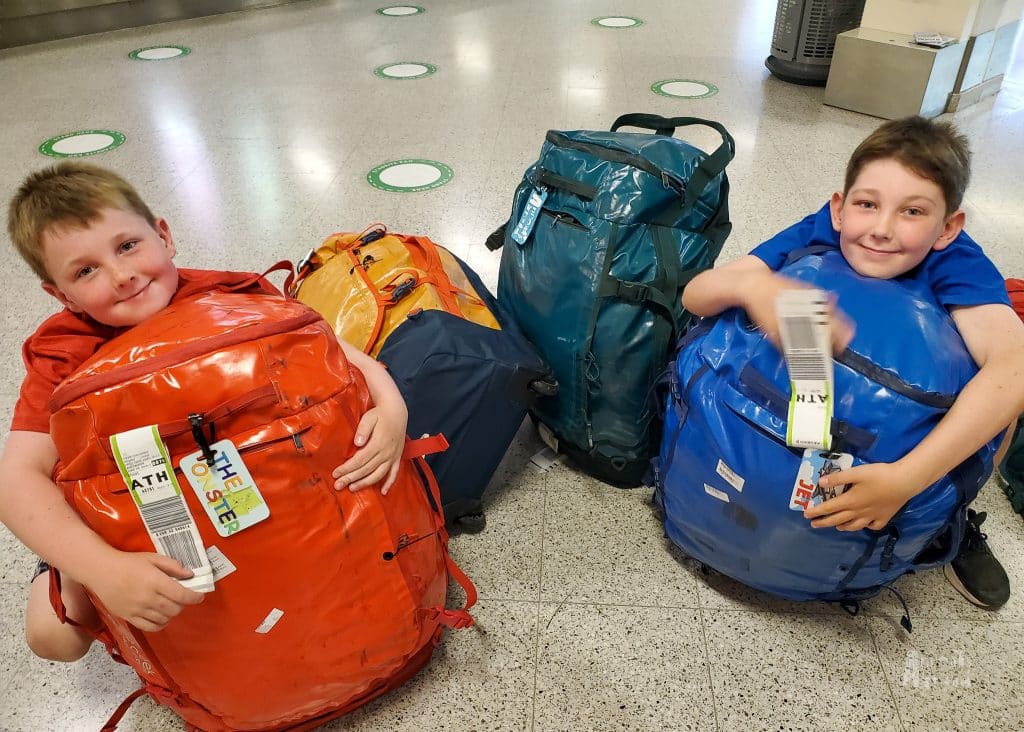
Ready to Get Started?
Check out these related posts to help plan your World Trip:
• Our 17 Month World Trip Itinerary
• This or That? Saving to Make it Happen
• How to Involve Your Kids in Planning a World Trip

